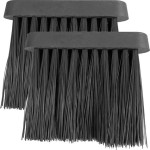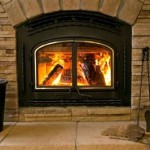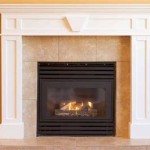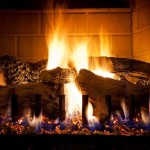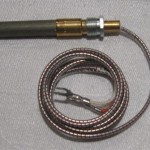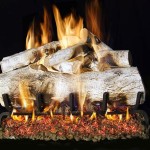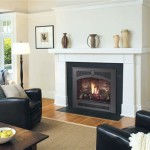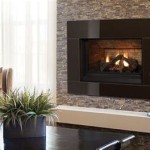Pellet Inserts For Fireplaces: A Comprehensive Overview
Pellet inserts for fireplaces represent a significant advancement in home heating technology, offering a convenient and efficient alternative to traditional wood-burning fireplaces. These inserts are designed to be installed directly into an existing fireplace opening, transforming it into a modern heating appliance that burns compressed wood pellets. The resulting heat is cleaner, more controllable, and often more economical than open fireplaces, making pellet inserts a popular choice for homeowners seeking to enhance their heating efficiency and environmental responsibility.
Understanding the functionality, benefits, and considerations associated with pellet inserts is crucial for making an informed decision about home heating options. This article will delve into the mechanics of pellet inserts, their advantages over traditional fireplaces, factors to consider when selecting a pellet insert, and the overall impact they can have on home heating costs and environmental footprint.
Understanding the Mechanics of Pellet Inserts
Pellet inserts operate by automatically feeding wood pellets from a hopper into a burn pot. An auger system, powered by an electric motor, precisely controls the rate at which pellets are delivered, ensuring consistent combustion. The burn pot is designed to maximize airflow, promoting efficient burning and complete combustion of the pellets. An integrated fan then circulates the heated air throughout the room, providing consistent and even heat distribution.
The combustion process is carefully regulated by an electronic control system. This system monitors temperature, adjusts the auger speed, and controls the fan speed to maintain the desired heat output. This level of automation allows for precise temperature control, making pellet inserts significantly more efficient and user-friendly than traditional wood-burning fireplaces. Many models also feature programmable thermostats, enabling users to schedule heating cycles based on their individual needs and preferences.
A key component of a pellet insert is the venting system. Unlike traditional fireplaces, pellet inserts require a sealed venting system that exhausts combustion gases to the outside. This venting system is typically made of stainless steel and is designed to prevent the backflow of flue gases into the home. Proper installation of the venting system is critical for ensuring safe and efficient operation of the pellet insert. The venting system must be installed according to manufacturer specifications and local building codes.
The ash produced by burning pellets is minimal compared to wood-burning fireplaces. This simplifies maintenance, as the ash pan only needs to be emptied periodically, typically every few days or weeks depending on usage. The reduced ash production also contributes to cleaner indoor air quality and reduces the environmental impact of home heating.
Advantages of Pellet Inserts Over Traditional Fireplaces
The advantages of pellet inserts over traditional wood-burning fireplaces are numerous and compelling. These benefits extend beyond simple convenience, encompassing enhanced efficiency, improved safety, and greater environmental responsibility.
Efficiency: Pellet inserts are significantly more efficient than traditional fireplaces. While open fireplaces typically convert only 10-20% of the fuel's energy into usable heat, pellet inserts can achieve efficiencies of 70-85%. This means that a greater proportion of the energy contained in the wood pellets is used to heat the home, resulting in lower heating costs. The precise control offered by the electronic system ensures that fuel is burned efficiently and that heat output is optimized to meet the desired temperature.
Convenience: The automatic feeding system of pellet inserts eliminates the need for constant manual stoking and refueling, which is common with traditional fireplaces. The hopper can hold a substantial amount of pellets, allowing for extended burn times without intervention. Many models offer automatic ignition, further simplifying the operation of the unit. The programmable thermostat allows the user to set the desired temperature and schedule heating cycles, similar to a modern furnace.
Cleanliness: Pellet inserts produce significantly less smoke and creosote than traditional fireplaces. The complete combustion of the pellets and the sealed venting system reduce the amount of pollutants released into the atmosphere. The reduced creosote buildup in the venting system also minimizes the risk of chimney fires. This contributes to cleaner indoor air quality and reduces the environmental footprint of home heating.
Safety: Pellet inserts are designed with safety in mind. The sealed combustion chamber prevents the backflow of flue gases into the home, reducing the risk of carbon monoxide poisoning. The automatic shut-off features prevent overheating and other potential hazards. The reduced creosote buildup minimizes the risk of chimney fires. The controlled combustion process also reduces the risk of sparks and embers escaping from the fireplace, further enhancing safety.
Factors to Consider When Selecting a Pellet Insert
Choosing the right pellet insert requires careful consideration of several factors, including the size of the space to be heated, the heating capacity of the insert, the hopper capacity, the venting requirements, and the features offered by different models.
Heating Capacity: The heating capacity of a pellet insert is measured in British Thermal Units per hour (BTUs). The required BTU output depends on the size of the space to be heated, the insulation levels of the home, and the local climate. A larger space or a poorly insulated home will require a higher BTU output. It is important to choose an insert that is appropriately sized for the intended heating area. An undersized insert will struggle to maintain the desired temperature, while an oversized insert may cycle on and off frequently, reducing efficiency and potentially causing discomfort.
Hopper Capacity: The hopper capacity determines how long the insert can burn without requiring refueling. A larger hopper capacity is desirable for those who want to minimize the need for frequent refills. Hopper capacity is typically measured in pounds of pellets. Consider the expected usage patterns when selecting an insert with an appropriate hopper capacity. For example, if the insert will be used as the primary heating source during the winter months, a larger hopper capacity will be beneficial.
Venting Requirements: Pellet inserts require a dedicated venting system that exhausts combustion gases to the outside. The venting system must be installed according to manufacturer specifications and local building codes. The type and length of the venting system will depend on the specific model of pellet insert and the layout of the home. It is important to consult with a qualified installer to ensure that the venting system is properly designed and installed. Issues like the existence of an already masonry chimney and whether it will be used or if a full stainless-steel liner must be installed need to be considered.
Features and Controls: Pellet inserts offer a variety of features and controls that can enhance their convenience and usability. Programmable thermostats allow users to schedule heating cycles based on their individual needs and preferences. Automatic ignition simplifies the start-up process. Variable speed fans allow users to adjust the airflow and heat distribution. Some models also offer remote control capabilities, allowing users to adjust the temperature and settings from a distance. Choose an insert with the features and controls that best meet individual needs and preferences.
Efficiency Ratings: Look for pellet inserts with high efficiency ratings. The higher the efficiency rating, the more heat the insert will produce from each pound of pellets burned. This will result in lower heating costs and a reduced environmental footprint. Check the manufacturer's specifications and look for Energy Star certified models.
Aesthetics: Consider the aesthetics of the pellet insert and how it will complement the existing decor of the home. Pellet inserts are available in a variety of styles and finishes. Choose an insert that matches the overall style and aesthetic of the room.
Professional Installation: Proper installation of a pellet insert is critical for ensuring safe and efficient operation. It is highly recommended to have the insert installed by a qualified professional. A professional installer will have the necessary expertise and experience to properly install the insert, connect the venting system, and ensure that the unit is operating safely and efficiently. Improper installation can lead to reduced efficiency, increased risk of fire, and potential exposure to carbon monoxide.
Cost Considerations: The cost of a pellet insert can vary depending on the model, features, and installation requirements. Consider the initial cost of the insert, the cost of installation, and the ongoing cost of fuel when making a decision. While pellet inserts may have a higher initial cost than traditional fireplaces, the long-term savings in fuel costs can often offset the initial investment. Also, check for potential rebates or tax credits that may be available for installing a high-efficiency heating appliance.
By carefully considering these factors, homeowners can select a pellet insert that meets their specific needs and provides efficient, clean, and reliable heating for their home.

Pellet Fireplace Inserts Lopi Stoves Made In Usa

Pellet Fireplace Inserts Lopi Stoves Made In Usa

Pellet Fireplace Inserts Complete Home Concepts

Fireplace Insert Installation Wood Inserts Gas Pellet And Electric

Gci60 Cast Iron Pellet Stove Insert Regency

Wood Stoves Pellet Gas Fireplace Inserts

Pellet Fireplace Inserts Lopi Stoves Made In Usa

Pellet Fireplace Inserts Insert Installation In Burlington Wi More

Fireplace Insert Stoves Wood Gas Pellet Traditional Baltimore Maryland

Pellet Stove Inserts Turn Drafty Fireplaces Into Heaters Complete Home Concepts
Related Posts

